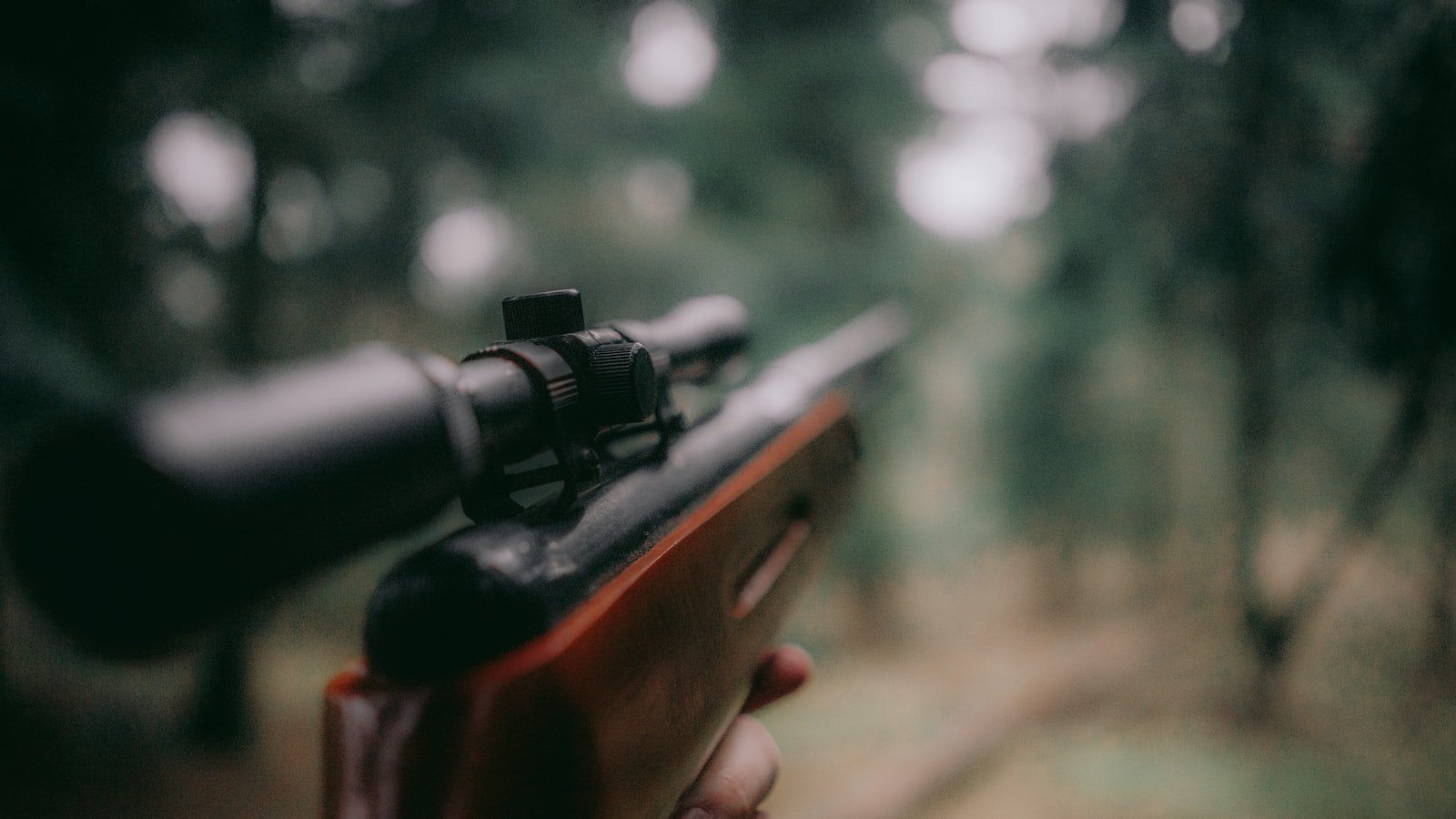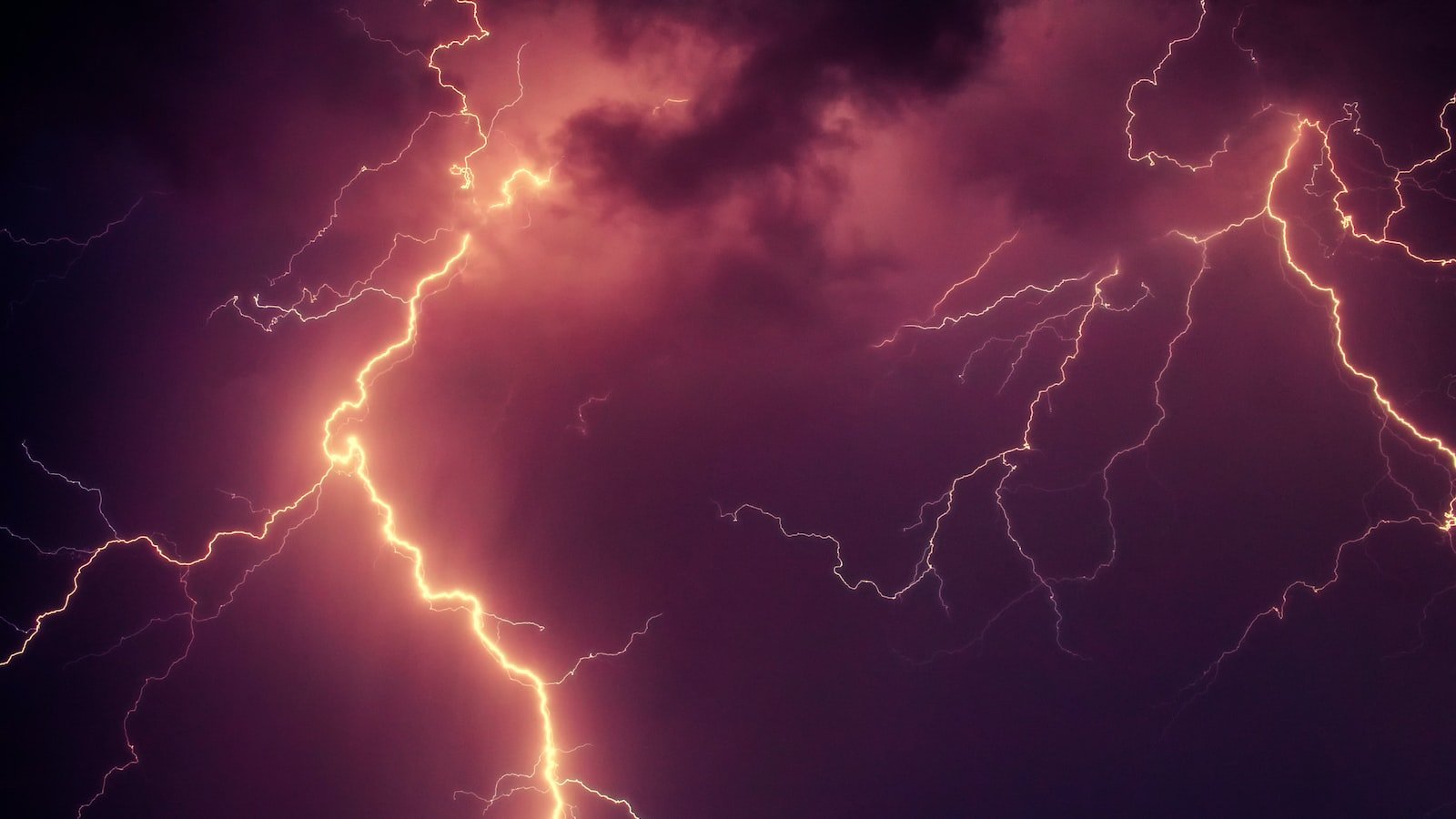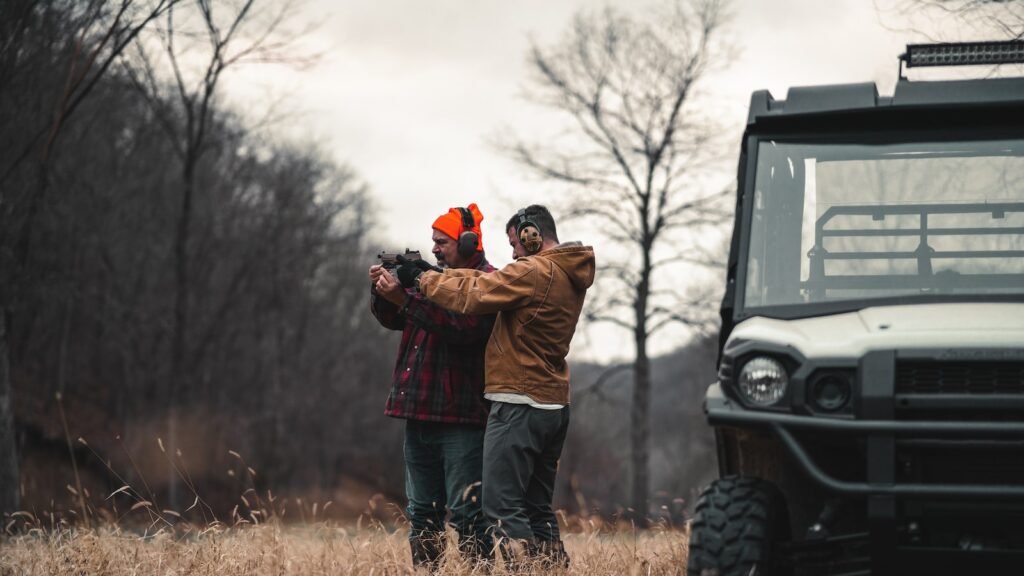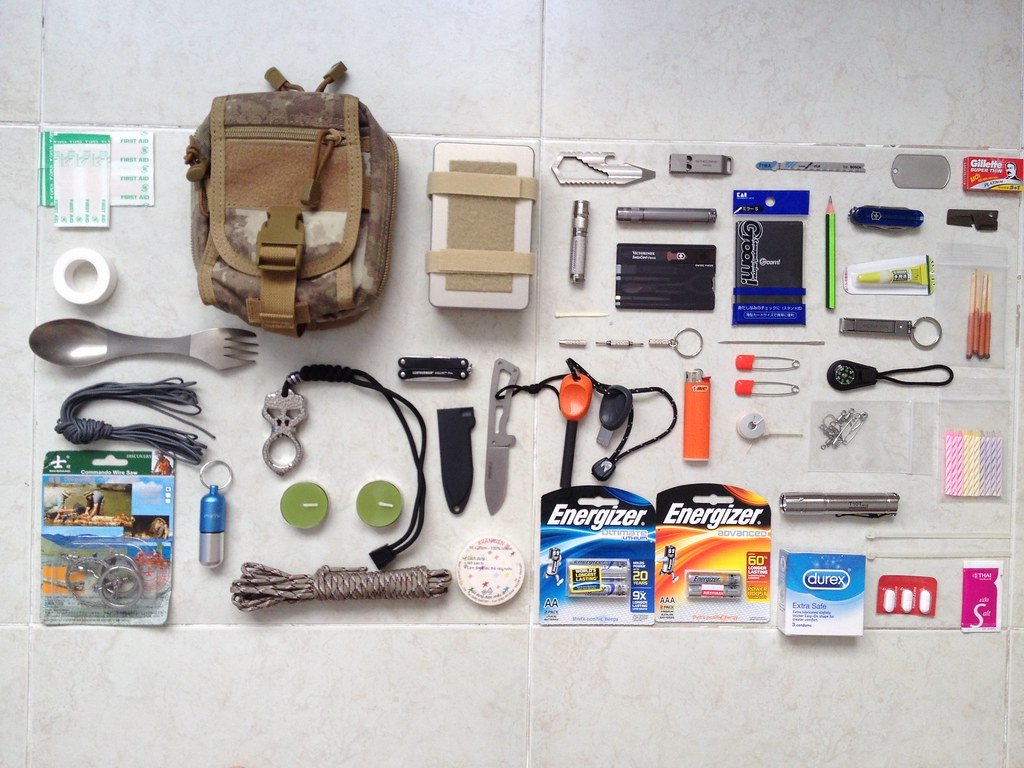Now Reading: How to Hunt in Different Weather Conditions
-
01
How to Hunt in Different Weather Conditions

How to Hunt in Different Weather Conditions
As the early morning rays of sunlight gently pierce through the dense cover of towering trees, a seasoned hunter readies his gear, bracing himself for the exhilarating pursuit that lies ahead. Mother Nature, however, does not always offer her bounty in predictable and comfortable circumstances. Adapting to different weather conditions while embarking on a hunting expedition can be the ultimate test of one’s patience, resourcefulness, and ability to outwit both the elements and elusive prey. Whether it be the blistering heat of summer, the bone-chilling cold of winter, or the unpredictable moods of rain-soaked forests, hunters must be well-equipped with essential knowledge and strategies to conquer these varied atmospheric challenges. In this comprehensive guide, we delve into the art of hunting in different weather conditions, equipping both novice and seasoned hunters with the tools necessary to pursue their passion while still keeping a keen eye on the ever-changing skies above.
Table of Contents
- Weather Considerations for Successful Hunting
- Understanding the Impact of Weather Conditions on Hunting
- Adapting Hunting Strategies to Different Weather Scenarios
- Recommended Gear and Techniques for Hunting in Challenging Weather Conditions
- Mastering Weather-dependent Hunting Techniques
- Q&A
- Closing Remarks

Weather Considerations for Successful Hunting
When it comes to hunting, weather conditions play a crucial role in determining your success. Mother Nature can either be your best ally or your worst enemy in the field. Understanding the weather and its impact on hunting can make all the difference in bringing home a prized trophy or leaving empty-handed. Let’s explore some key :
1. Wind Direction: Pay close attention to the wind direction before heading out. Animals have a keen sense of smell, and hunting upwind can quickly give away your position. Utilize the wind to your advantage by positioning yourself downwind from the game you are pursuing. This way, your scent will be carried away from them, making it harder for them to detect your presence.
2. Temperature and Time of Day: Temperature can greatly impact animal behavior during hunting season. Animals are generally more active during cooler parts of the day, such as early morning or late in the evening. Take advantage of these times to increase your chances of encountering game. Moreover, extreme temperatures can affect animal movement, causing them to seek shelter or water sources. Understanding the temperature patterns in your hunting area can help you plan your hunting strategy accordingly.
3. Precipitation and Visibility: Rain, snow, or fog can significantly affect your hunting experience. While heavy precipitation may make it difficult to see and track game, lighter rain can create favorable hunting conditions by masking your sounds and scent. Similarly, snowfall can make tracking animals easier, leaving visible tracks for you to follow. However, dense fog can limit your visibility, making it challenging to spot and accurately identify your target. Be cautious during adverse weather conditions, and adjust your hunting technique accordingly.
By considering these weather factors and adapting your approach accordingly, you increase your chances of a successful hunting trip. Remember, nature is unpredictable, so always stay prepared and be flexible in your hunting strategy to make the most of the weather conditions you encounter.

Understanding the Impact of Weather Conditions on Hunting
Factors Affecting Hunt Success:
Hunting is an exhilarating and rewarding activity that requires careful consideration of various factors, with weather conditions playing a significant role in determining the success of a hunt. Understanding the impact of weather on hunting can greatly enhance a hunter’s chances of achieving their objective. Here are some key factors to consider:
- Temperature: Temperature plays a crucial role in the behavior and movement of wildlife. Extreme temperatures, whether hot or cold, can affect an animal’s activity patterns. Understanding how animals respond to different temperatures can help hunters strategize their hunting approach accordingly.
- Precipitation: Rain, snow, or even mist can greatly impact hunting conditions. While light rain can often make it easier to track animals due to enhanced scent detection, heavy rainfall can make it challenging to maneuver in the field. Similarly, snow can both facilitate tracking or make animal movements more elusive. Assessing the impact of precipitation on the specific terrain and animal behavior is paramount.
- Wind: The direction and strength of wind influence scent dispersal and noise levels, which can either work for or against hunters. While a gentle breeze might carry human scent away from animals, a gusty wind can easily give away a hunter’s presence. Understanding wind patterns and identifying suitable hunting positions can significantly enhance the odds of a successful hunt.
- Barometric Pressure: Changes in barometric pressure can affect animal physiology and behavior. It is believed that low-pressure systems can make animals more active and increase their movement, whereas high-pressure systems may cause animals to become more lethargic. Monitoring barometric pressure trends can provide valuable insights into animal behavior during a hunt.
- Daylight: The amount of daylight available directly affects wildlife activity, as animals tend to be more active during sunrise and sunset. Additionally, certain species exhibit specific behavior patterns during different times of the day. Understanding these patterns can help hunters plan their hunting trips accordingly, maximizing their chances of encountering game.
By keenly observing and analyzing the weather conditions, hunters can adapt their strategies, select appropriate hunting locations, and increase their chances of a successful and memorable hunt. Remember, being well-prepared and knowledgeable about these weather-related factors can ultimately make a significant difference in the outcome of your hunting experience.

Adapting Hunting Strategies to Different Weather Scenarios
As seasoned hunters know, mastering the art of hunting involves more than just honing your aim and perfecting your camouflage. One crucial skill that separates the successful from the unsuccessful is the ability to adapt hunting strategies to different weather scenarios. Mother Nature’s shifting moods can be unpredictable, but with a little knowledge and flexibility, hunters can maximize their chances of a victorious hunt, regardless of the conditions.
When it comes to rain-soaked days, it’s essential to adjust your approach to accommodate for reduced visibility and heightened animal awareness. With rainfall dampening sounds and smells, it’s best to rely on your visual senses during these times. Taking a vantage point or setting up in a covered blind can shield you from the elements while giving you an optimal view. Utilizing decoys or calls that imitate animals seeking shelter from the rain can also attract prey, distracting them from your presence.
In contrast, hunting during extreme heat requires a different set of tactics. Animals tend to be more lethargic and less active during scorching temperatures, favoring shady spots over exposed areas. In this scenario, patience is key. Identifying watering holes, natural springs, or dense vegetation that provide relief from the heat becomes a priority. Stake out near these areas and wait for unsuspecting prey to come to you. Remember to stay hydrated, wear breathable clothing, and move slowly to avoid detection.
- When it’s windy, use it to your advantage by setting up in downwind locations. This way, your scent will carry away from the hunting grounds, making it harder for animals to pick up your presence.
- In snowy conditions, animals leave tracks, making it easier for hunters to locate their movements. Following these tracks can lead you to active hunting grounds or help you understand the patterns and habits of the game you’re pursuing.
- Hunting during foggy days may seem challenging, but it can create excellent camouflage for hunters. Take advantage of the obscured visibility by moving slowly and quietly, relying on your hearing to detect the sounds of nearby prey.
Adapting your hunting strategies to different weather scenarios can be the key to a successful hunt. By studying weather patterns, understanding wildlife behavior, and flexibly adjusting your approach, you’ll increase your chances of a rewarding experience, no matter what Mother Nature throws your way.

Recommended Gear and Techniques for Hunting in Challenging Weather Conditions
In order to successfully navigate challenging weather conditions while hunting, it is important to be well-prepared with the right gear and techniques. Here are some recommendations to help you conquer adverse weather:
- Layer Up: Dressing appropriately is key to staying warm and comfortable during extreme weather. Start with a moisture-wicking base layer to keep sweat away from your skin. Add a insulating layer such as fleece or down for warmth, and top it off with a waterproof outer shell to protect against rain or snow. Don’t forget to wear warm, waterproof boots and thermal socks to keep your feet dry.
- Optics and Visibility: When visibility becomes challenging, equip yourself with quality optics. A reliable pair of binoculars will assist in scanning your surroundings, searching for prey, and avoiding potential hazards. Additionally, consider using blaze orange gear or clothing to enhance your visibility to other hunters in low-light conditions.
- Stay Hydrated and Nourished: Cold weather can deceive you into thinking you don’t need to stay hydrated, but it’s essential to drink plenty of fluids. Carry an insulated water bottle or thermos filled with warm liquids like tea or soup. Pack high-energy snacks such as nuts, protein bars, and jerky to keep your energy levels up throughout the day.
- Tactical Approaches: In challenging weather conditions, hunting may require some adaptations. Consider setting up ground blinds or using tree stands for better protection against wind and rain. Focus on areas with natural cover or terrain that can shield you from harsh elements. Moreover, try calling or using scent attractants to compensate for diminished auditory or olfactory senses.
Remember, hunting in challenging weather conditions can present additional risks, so always prioritize safety and be aware of your surroundings. With the right gear, techniques, and a mindset geared for resilience, you can turn adverse weather into a successful hunting experience.
Mastering Weather-dependent Hunting Techniques
When it comes to hunting, one of the most influential factors to consider is the weather. Nature’s elements can greatly affect the behavior and patterns of game, making it essential for hunters to adapt their strategies accordingly. To become a master hunter, one must possess the knowledge and skills to navigate the ever-changing weather conditions. Here are some tried and true techniques to help you unlock the secrets of weather-dependent hunting:
1. Understanding the Impact of Weather: Weather conditions have a significant impact on animal behavior. For example, during hot summer days, game animals tend to seek shelter during the midday heat, making early mornings and late evenings prime hunting times. On the other hand, rainy or snowy weather can lead to heightened activity as animals search for food and water. By studying and understanding the effects of weather on different species, you can predict their movements and plan your hunting trips accordingly.
2. Utilizing Stealth Techniques: When the weather is less than favorable, animals often rely on their heightened senses to detect potential threats. To overcome this challenge, it’s crucial to master stealth techniques during such conditions. Be mindful of your scent, use appropriate camouflage, and move slowly and silently. By blending into the environment and minimizing your presence, you increase your chances of getting closer to your target undetected.
3. Adapting to Weather Changes: Weather can change rapidly, and as a hunter, it’s important to be adaptable. Always keep an eye on weather forecasts and be prepared to adjust your hunting strategy accordingly. If a sudden storm rolls in, take cover and wait it out. Similarly, if there’s a sudden shift in wind direction, consider changing your position to catch game off-guard. Flexibility is key when it comes to hunting in ever-changing weather conditions.
By , you gain an edge over other hunters and increase your chances of a successful hunt. Remember, it’s crucial to prioritize safety and abide by hunting regulations to ensure a sustainable and responsible hunting experience. So, embrace the elements, study the weather, and become a skilled hunter prepared for any challenge nature throws your way!
Q&A
Q: Can you provide some tips for hunting in rainy weather?
A: When hunting in the rain, it’s important to wear waterproof gear and choose a hunting spot that provides ample shelter. Rain tends to make animals more skittish, so move slowly and silently to increase your chances of a successful hunt.
Q: What precautions should I take when hunting in extreme heat?
A: In hot weather, it’s crucial to stay hydrated and avoid overheating. Plan your hunt for early morning or late afternoon when temperatures are lower, and dress in lightweight, breathable clothing. Additionally, consider hunting near water sources where animals are more likely to gather.
Q: How can I adapt my hunting strategy during cold and snowy conditions?
A: During cold and snowy weather, animals tend to become more active as they search for food. Look for tracks and signs of movement in the snow to identify potential hunting spots. Wearing insulating layers, using calls to imitate distressed prey, and being patient are keys to success in these conditions.
Q: Is it possible to hunt during strong winds?
A: Hunting in windy conditions can be challenging, as the noise created by the wind can alert animals to your presence. However, strong winds can also offer an advantage by masking your noise and scent. When hunting in windy weather, try to stay downwind of your intended target and move stealthily to maximize your chances of a successful hunt.
Q: What should I keep in mind when hunting in foggy conditions?
A: Foggy conditions can limit visibility, making it more difficult to track animals. Reduce your movement and rely on your hearing to locate prey, as sound tends to travel better in fog. Additionally, wearing bright, reflective clothing and using a GPS or compass can help maintain your sense of direction in low-visibility situations.
Q: How can I improve my hunting success during overcast days?
A: Overcast days offer ideal conditions for hunting, as the diffused light can reduce shadows and make it easier to spot game. Take advantage of the gloomy weather by using camouflage and moving slowly to blend in with the surroundings. Keep in mind that animals may be more active during overcast days, so pay close attention to your surroundings and be patient.
Closing Remarks
As we conclude our journey through the diverse realms of hunting in different weather conditions, we hope you find yourself armed with newfound knowledge and a heightened anticipation for your next adventure in the wild. From the ethereal frost-kissed plains of winter to the tantalizing mist that veils the dawn of autumn, the changing weather offers hunters an ever-evolving tapestry of challenges and triumphs.
As we discussed the strategies required to navigate the treacherous terrains of rain-soaked forests and the scorching heat of summer, we witnessed the delicate dance between man and nature, where patience and adaptability stand as pillars of success. Remember the secret whispers of the wind, the soft patter of raindrops, and the gentle sway of heatwaves, for they reveal valuable clues to the whereabouts of elusive prey.
In the depths of winter, we delved into the enigmatic world of snow-covered landscapes, where silence reigns and footprints become stories etched in the canvas of icy fields. With unwavering determination and knowledge of animal behavior, we uncovered the secrets of tracking and ambushing amidst the glistening winter wonderland.
Spring, the season of revival and rejuvenation, brought forth its own set of challenges. We learned to navigate the tumultuous dance of conflicting scents and shifting animal patterns, embodying the spirit of a detective who unveils nature’s coded offerings. Hidden behind blooming flowers and vibrant foliage, elusive game tantalized our senses, reminding us of the ephemeral nature of time and the need for ceaseless vigilance.
Finally, as summer’s fierce embrace enveloped us, we discovered the true test of endurance and mental fortitude. With the sun beating down upon us, we honed our skills in the blistering heat, knowing that patience and stealth would be our closest allies. Through the relentless pursuit of knowledge, we unraveled the intricate orchestration of life in the summertime, where every creature adapts and thrives under the sweltering sun.
Now equipped with a repertoire of strategies tailored to each climatic chapter nature offers us, we encourage you to embark on your hunting endeavors with an open mind and a heart filled with respect for the beauty that surrounds us. As the seasons change, so too does the art of the hunt, guiding us towards a deeper understanding of the interconnectedness between man, beast, and the ever-changing weather.
So, venture forth, fellow hunters, into the gales of winter, the radiant blossoms of spring, the scorching rays of summer, and the solemn mists of autumn. Seek solace in the untamed wilderness, for it is here that we find ourselves and discover the truth that lies within the shifting winds. And always remember, in the realm of hunting, as in life, adapting to the whims of nature seals our connection to the ancient art that has captivated us for generations.
As an affiliate, my content may feature links to products I personally use and recommend. By taking action, like subscribing or making a purchase, you’ll be supporting my work and fueling my taco cravings at the same time. Win-win, right?
Want to read more? Check out our Affiliate Disclosure page.





